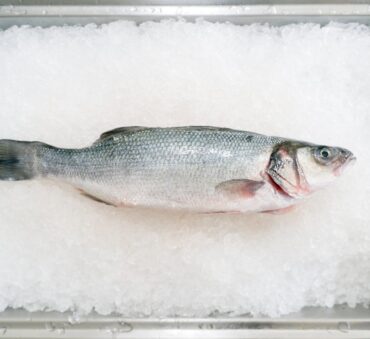In the United States, about 292.4 million tons of municipal solid waste are generated each year, which translates to around 4.9 pounds per person per day. According to food waste statistics, this has long-term effects on the environment, economy, and society alike, making landfill diversion a high priority in the fight against food waste.
With waste generation increasing by the day, innovative approaches, collaboration along the supply chain, and increased awareness are more important than ever. Keep reading to explore the importance of waste diversion, how to calculate the waste diversion rate, and different strategies that organizations and communities can utilize.
Key Takeaways
- Landfill diversion rates help businesses evaluate the success of their waste diversion programs over time, allowing them to improve their approach if they don’t meet their desired landfill diversion targets. To calculate this number, businesses can divide the weight of diverted waste by the weight of total waste, then multiply the quotient by 100.
- Effective food waste management has long-lasting environmental, economic, and social benefits, including reduced greenhouse gas emissions, lower contamination risks, cost savings, and decreased food insecurity, among others.
- There are multiple obstacles that impede effective landfill diversion, with regulatory barriers and technological and infrastructure limitations both being large hurdles in the fight against food waste. To address these issues, better coordination among federal, state, and local governments is required, as well as increased support for technology and infrastructure.
- Changes in global and local policies can shape the future of landfill diversion strategies by improving awareness, promoting a circular economy, and increasing funding for innovative waste management practices.
What is Landfill Diversion?
Landfill diversion, or waste diversion, is the process of diverting waste from landfills by redirecting it to more sustainable outlets. The goal is to reduce the amount of food waste in landfills by using innovative approaches that manage and repurpose waste. As stated by the United States Environmental Protection Agency, minimizing solid waste includes source reduction, recycling, reuse, and composting, demonstrating the various approaches that businesses can use to improve their waste diversion efforts.
Landfill Diversion Rate
Landfill diversion rates measure the amount of waste not sent to landfills. Tracking this number over time helps businesses evaluate the success of their waste diversion programs, allowing them to compare the amount of waste they divert from landfills each year.
The first step to measuring your waste diversion rate is to conduct a food waste audit. This audit helps you identify how much waste your business generates, where along the supply chain it’s being generated, and what kind of waste it involves. By understanding how much waste your company is currently generating, you can create a custom waste diversion strategy that addresses your specific requirements.
The next step is to calculate your landfill diversion rate. You can do this by dividing the weight of diverted waste by the weight of total waste, then multiplying the quotient by 100. Using this number, your company can create landfill diversion targets, which will vary between companies, industries, and the individual goals of each company.
Tools for Calculating Diversion Rate
Modern technology makes tracking food waste diversion simpler and more accurate. There are multiple tools that companies can use, including digital waste tracking platforms, smart scales, and remote sensing, to streamline data collection and help companies track diversion rates in real-time.
AI is a effective tool against food waste, offering valuable insights that allow companies to reduce the amount of waste they generate and identify opportunities for improvement.
When deciding on a solution, businesses must consider their budget, time, and long-term cost savings and objectives. Whether done manually or with technology, businesses should inform and train all employees on organic waste diversion techniques and keep detailed records of their progress to optimize results.
Importance of Accurate and Transparent Reporting
Accurate and standardized data reporting in landfill diversion is key to ensuring accountability and encouraging continuous improvement. This is because updated and honest records help businesses understand if their strategy is working or needs further improvement.
For instance, if a company is not achieving its landfill diversion targets, they must evaluate their plan to better understand what can be improved. However, when reporting is inaccurate or lacks consistency, it makes it difficult for businesses to pinpoint the root of the problem.

Importance of Landfill Diversion
What are the benefits of maximizing waste diversion?
Effective food waste management has long-lasting environmental, economic, and social benefits. Keep reading to explore how landfill diversion can be a big contributor to sustainability goals, reducing greenhouse gas emissions, conserving natural resources, and fostering a more circular economy.
Environmental Impact of Landfill Diversion
There are many environmental benefits to increased diversion from landfills, such as reduced greenhouse gas emissions and lower contamination risks. Reducing food waste also reduces environmental degradation by minimizing the need for additional landfill space.
Since water, energy, land, and labor are all required to produce food, keeping products in circulation through upcycling, composting, or other innovative methods means that we get the most value from each product.
Overall, landfill diversion innovations play a crucial role in keeping food out of landfills, which helps reduce its environmental footprint and create long-term sustainable solutions.
Economic Benefits of Landfill Diversion
There’s a large economic impact of food waste that affects individuals and businesses along the supply chain. With food waste costing an estimated $218 billion each year in the United States, landfill diversion presents a valuable opportunity for businesses and individuals to save money.
In fact, the relationship between food waste and the circular economy goes beyond cost savings, offering businesses the opportunity to generate a new revenue stream, but how?
There are many strategies that businesses can explore to turn their excess food waste into profit. This includes turning food waste to energy, biogas generation, and animal feed, to name a few.
As part of a comprehensive food waste reduction strategy, businesses can also explore new ways to keep their products in circulation by turning surplus food into new and innovative products that they can put on the market. For instance, a restaurant may turn surplus fruits into jams, or a bakery can reduce waste by using leftover dough to create a new product for their clients.
Social and Community Advantages
From a humanitarian standpoint, reducing food waste presents numerous societal benefits. With food insecurity affecting 44 million people in the United States alone, landfill diversion is a step in the right direction towards bridging the gap between excess food and food insecurity. Increased donation efforts and discount prices for surplus food are just two of the ways that waste diversion plans can make a difference in their communities.
Reducing landfill use can also bring short- and long-term benefits to surrounding communities. Since neighboring communities are exposed to landfill pollutants, including gas containing methane and carbon dioxide, contaminated soil and water, and more, they are at serious risk for health complications.
By reducing the amount of food waste sent to landfills, we’re also working to enhance community health, safety, and overall quality of life.

Landfill Diversion Challenges
What are common barriers to implementing waste diversion programs?
Unfortunately, there are multiple obstacles that impede effective landfill diversion, with regulatory barriers and technological and infrastructure limitations both being large hurdles in the fight against food waste. Keep reading to learn more about these challenges, where we’ll discuss potential solutions to these complex issues.
Regulatory and Policy Barriers
While policies have the power to make large-scale change, they also provoke challenges in food waste diversion due to inconsistencies in regulations, with different states, counties, and municipalities having their own incentives and rules. This means that the amount of government support, consumer awareness, and available infrastructure may vary among states and communities.
As stated in this review, there are a number of additional policy barriers that require attention. This includes the need to clarify the responsibilities of all levels of government and of private sector product manufacturers and waste disposers, establish incentives for source separation, ensure markets for recyclables, and allocate the increased cost of waste management.
To create a more standardized approach, better coordination among federal, state, and local governments is required, with an emphasis on incentives for adopting a circular economy to encourage diversion from landfills.
Technological and Infrastructure Limitations
Many waste diversion programs require advanced technology and proper infrastructure to support efficient waste sorting and processing. This includes the implementation of sensor technologies, the use of data analytics and AI, investing in infrastructure for waste management facilities, and developing efficient transportation logistics, among others.
That said, not all companies have access to these resources. This is especially true for small companies and underserved communities, presenting a huge disadvantage to areas that don’t have access to proper technology and infrastructure.
To support waste management practices, there needs to be more support from governments, research institutions, and organizations, with investments allowing for more widespread efforts throughout the United States.
Landfill Diversion Strategies
To achieve landfill diversion targets, organizations and communities must use innovative approaches that promote long-term sustainability. Among these are advanced recycling techniques, composting, and increased collaboration between public and private entities.
Advanced Recycling Techniques
Recycling is an efficient strategy that works to keep food out of landfills, preserve natural resources, mitigate methane emissions, and reduce the need for additional landfill use. For businesses, food waste recycling also offers potential tax deductions, helps them maintain legal compliance, and can yield cost savings.
Some of the ways that food waste can be converted into new materials include anaerobic digestion, composting, and the creation of animal feed. Since every industry is different, each sector must create tailored solutions that address their unique obstacles and objectives.
Composting and Organic Waste Management
Managing organic waste through methods like composting is a great way to improve a business’ landfill diversion rate. Aside from increased diversion from landfills, this approach provides many benefits in the agricultural sector, such as providing essential nutrients that support healthy plant growth, improving soil structure, conserving water, and enhancing carbon sequestration.
In addition, this increasingly popular method can be applied on a small and large scale, meaning anyone can get involved; families can create an at-home compost pile, individuals can participate in community composting initiatives, and corporations can implement a large-scale composting strategy.
Public and Private Sector Collaboration
Food waste is a multifaceted issue that requires collaboration between multiple parties. That said, successful partnerships between governmental bodies and private companies are key to enhancing waste diversion efforts.
Increased collaboration between public and private stakeholders opens the opportunity to bring more widespread awareness to the current issue, encouraging long-term reductions that contribute to sustainability goals. This may include governments partnering with private companies to implement new waste management strategies, municipalities collaborating with private waste management companies to improve recycling initiatives, and so much more.
Future Trends in Landfill Diversion
With all eyes on food waste reduction efforts, we expect to see even more landfill diversion innovations in the coming years, which include more widespread adoption of food waste technology and increased waste management policies, as we’ll see below.
Innovations in Landfill Diversion Technology
Advanced technology improves waste sorting, recycling, and overall diversion efforts by helping reduce and manage food waste, making it a critical tool in waste diversion strategies.
To reduce waste, food waste tracking systems help businesses monitor, track, and analyze food waste data, offering valuable insights that help them reduce food waste along the supply chain. There are also food waste apps that connect businesses with food banks, help users buy unsold food at a discounted price, and encourage community sharing initiatives, all of which address food waste at the source.
Food waste technology is also being increasingly used to recycle and repurpose food waste. Technology can help streamline treatment strategies for more accurate and efficient solutions, which may include automated waste sorting, advanced composting techniques, and more.
Evolution of Waste Management Policies
Changes in global and local policies can help shape the future of landfill diversion strategies by improving awareness, promoting a circular economy, and increasing funding for infrastructure and innovative waste management practices.
Stricter restrictions on landfilling practices, which may include capacity limits and taxes, could also require and encourage businesses to adopt more sustainable practices. We’ve recently seen an increase in food waste laws in the U.S., but more laws are required to obligate businesses and communities to participate.
Overall, policymakers have the power to create a society where landfill diversion is required, therefore reducing the environmental, economic, and social consequences of it.
Conclusion
Landfill diversion should be a priority for both businesses and communities, with a focus on food waste recycling programs, donating surplus food to those in need, and reducing waste at the source. If your business wants to improve its landfill diversion rate, then you should prioritize creating a comprehensive waste management solution that’s tailored to your specific business needs.
At Shapiro, we have a range of organic waste solutions that help you manage large-scale waste in an environmentally friendly way. To learn more about our services and how we can help you reach your landfill diversion targets, contact us today.
Baily Ramsey, an accomplished marketing specialist, brings a unique blend of anthropological insight and marketing finesse to the digital landscape. Specializing in educational content creation, she creates content for various industries, with a particular interest in environmental initiatives.



